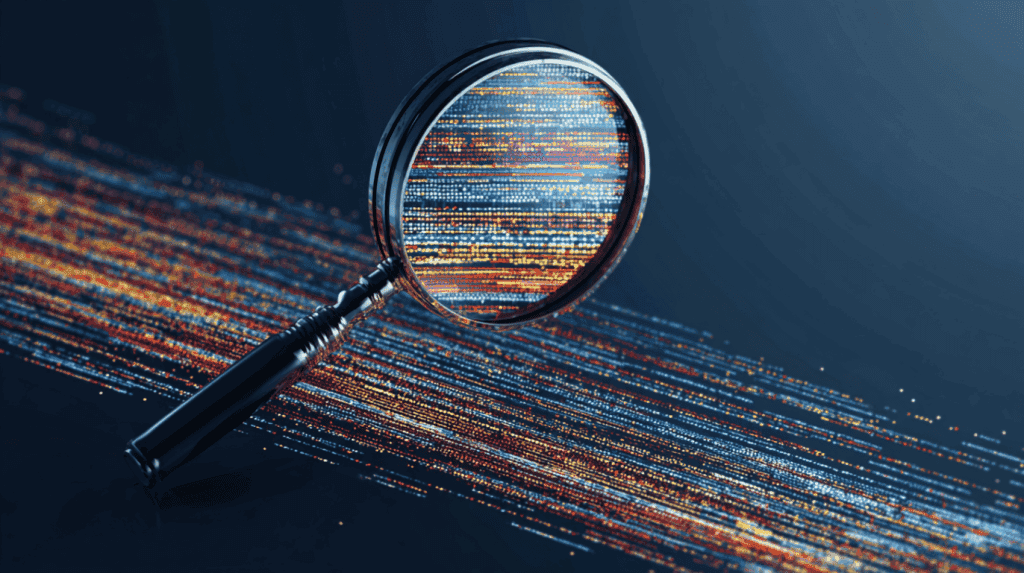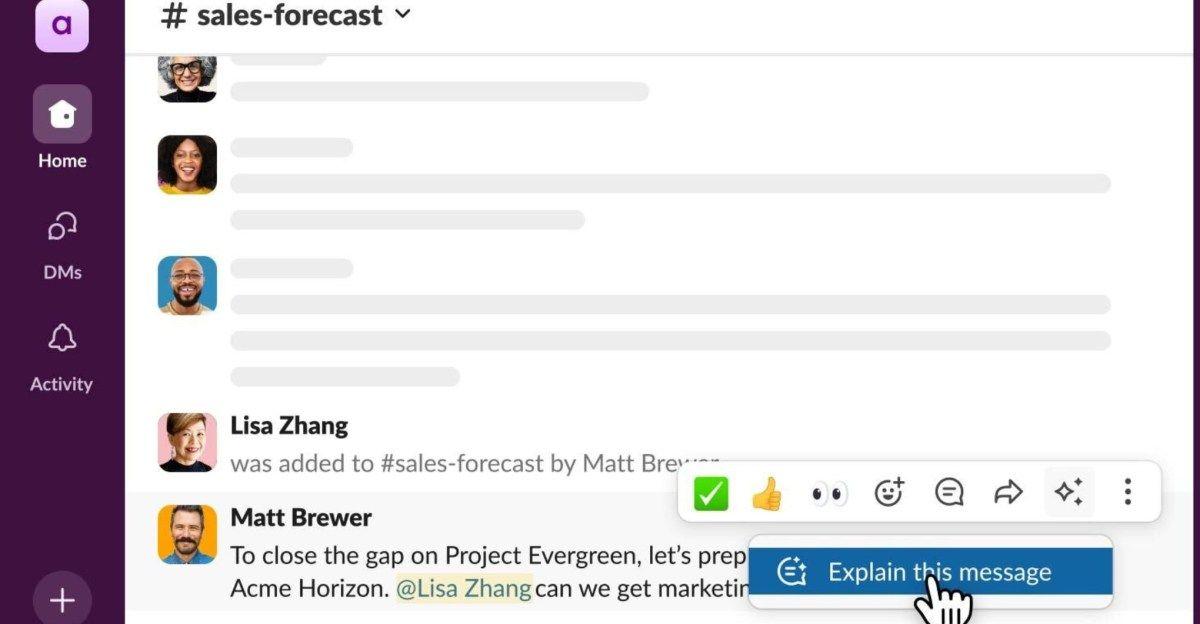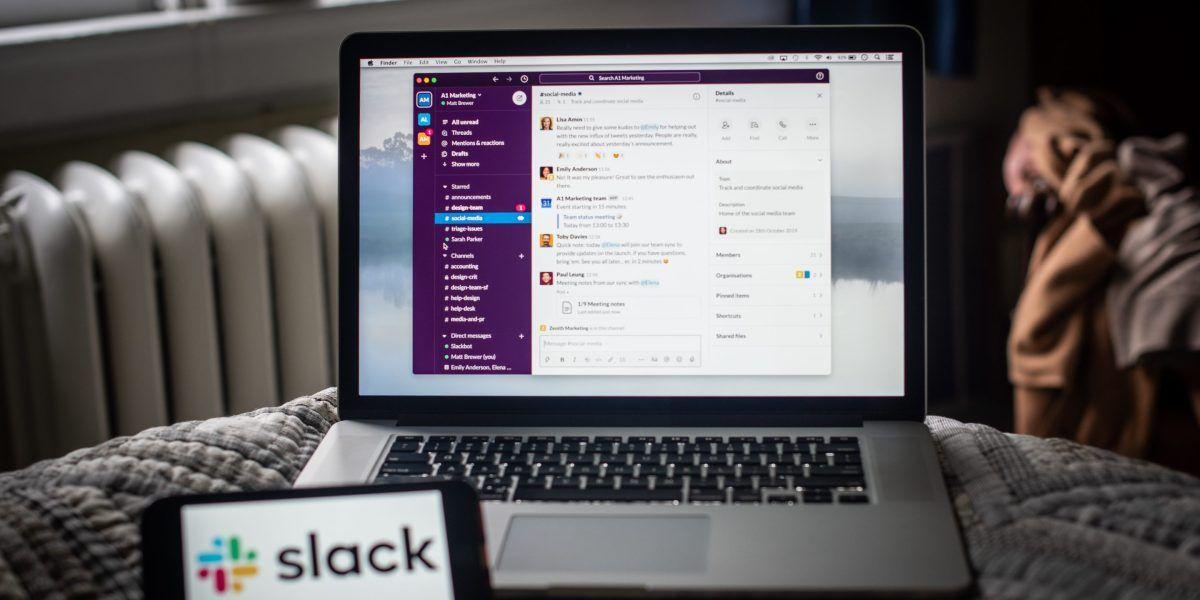Slack Unveils AI-Powered Features to Enhance Workplace Productivity and Communication
10 Sources
10 Sources
[1]
Slack bolsters search with AI, adds transcriptions and summaries for huddles | TechCrunch
As the race to bake in AI features into productivity apps intensifies, Slack is bolstering search on its app with AI features, adding transcription and summaries for huddles, and a way to see recaps of channels and threads. Using AI, Slack now lets you search across channels as well as connected apps (like Google Drive, Salesforce and Teams) to surface relevant files and conversations. This feature will be available on Slack's Business and Enterprise plans. The company is also using AI to bolster Huddles, the company's voice and video chat feature, with call transcriptions, summaries, and the app will automatically highlight key action items brought up in calls. And to help users catch up on conversations, Slack will offer summaries of messages in a channel or thread if you were away. The company said that it will roll out a way for users to get a summary of another user's profile, showing their role and recent work. There are also plans for a feature in the Activities tab that will surface action items when you're looking at a message mentioning you. Slack added that it is working on a feature that would let you use AI to explain a message in the context of the given conversation. For Canvas, a collaborative panel that lets users share guides, documents, and information, the company plans to add an AI-powered writing assistant that would help users create a canvas from any conversation or change the existing content's formatting. The app's also getting a design makeover -- we're getting a unified space for all shared files, lists, and Canvas items.
[2]
Slack says its AI can make sense of your company's jargon
Jess Weatherbed is a news writer focused on creative industries, computing, and internet culture. Jess started her career at TechRadar, covering news and hardware reviews. Slack is using AI to help business users quickly understand confusing company language and concentrate on their most important tasks. The communication platform announced that it will "soon" be adding a feature that explains workplace jargon, and an AI writing assistant for Slack canvases that automates repetitive writing tasks like summarizing conversations and note-taking. The AI message context feature will instantly explain messages that contain an acronym or unfamiliar phrase when the user hovers over them with their cursor. For any company jargon or terminology, Slack says the feature will draw on the vocabulary and conversation history of the user's workspace to help break down project names, internal tools, or team-specific shorthand. The idea is to save the user time by avoiding having to manually look up these terms or bug a colleague for an explanation. The writing assistant coming to canvases similarly aims to streamline workflows so users can concentrate on more important tasks. It can generate project briefs based on Slack conversations, extract and assign action items, and rewrite content to fit different tones, such as formal or friendly. It can also provide a full transcript for Slack huddle meetings and highlight the key points raised. An AI-generated action item feature will soon summarize task requirements when users are mentioned in messages that include a follow-up, deadline, or request, helping to prioritize the users' highest priority tasks. Slack is also introducing AI profile summaries that provide a quick overview of another user's role and recent contributions to give users context about unfamiliar teammates at a glance. All of the features mentioned above are in the pipeline, but Slack hasn't specified when they will be available. Slack has announced that two other features are now generally available, however. Users on paid Enterprise plans can access Slack's Enterprise Search chatbot, which answers questions using information pulled from their workspace's database, while AI-powered translations are now fully available to customers on Business Plus plans.
[3]
Slack will generate thread summaries and AI notes from your huddles now
Slack is harnessing AI to make workplace collaboration and communication even smoother. On Thursday, the workplace productivity software company announced four new AI-powered features built directly into its platform. The bundle is meant to function as a smart digital assistant operating in the background of a team's normal operations, automating routine and time-consuming tasks. Also: Claude Code's new tool is all about maximizing ROI in your organization - how to try it Accessible now for subscribers to its Pro, Business+, and Enterprise+ plans, the new features streamline access and search within Slack: The company added that a handful of other AI features are still to come. Users will soon be able to hover their cursor over unfamiliar jargon to receive AI-generated explanations based on a company's unique vernacular and conversation history. Customized AI-generated action items will be shared in a user's activity feed whenever they're mentioned in a message that specifies a specific task and deadline for them. Additionally, Slack's AI will provide writing tips in canvas, a feature within the platform designed to help teams view and work together on shared assets. An AI profile summaries tool will allow users to quickly learn about new team members, highlighting some details around their role and recent contributions. According to the company, a new unified files view will be the first effort to reimagine the Slack interface. In it, you'll be able to see all assets shared among your teammates, including canvases and documents, so you'll no longer have to painstakingly dig through old and extensive chats to find files. Also: How to turn off Gemini in your Gmail, Docs, Photos, and more - it's easy to opt out Like most enterprise AI efforts, the new features are meant to provide assistant-level support by taking care of simpler busywork and operational tasks. Microsoft and Google deployed a similar marketing strategy when they integrated their proprietary AI models into their workplace productivity platforms (Microsoft Office 365 and Google Workplace, respectively). Meanwhile, OpenAI is reportedly working on a similar AI-powered software for businesses. Several other companies, like Zoom and Box, have also recently introduced AI-powered solutions to help teams collaborate and share information more seamlessly. Also: What are AI agents? How to access a team of personalized assistants AI-powered features, in one form or another, are now available in every paid Slack subscription, but capabilities vary by plan. Pro is the most basic, followed by Business+, and then finally by Enterprise+, which offers the most powerful and expansive suite of AI features.
[4]
Slack is getting a host of new AI tools
Paid users will get channel recaps, message explanations and more. Slack, the cloud‑based team messaging juggernaut, is charging ahead with further integration of AI into users' day‑to‑day experience. The company is introducing a series of tools aimed at improving productivity and improving team communication. AI writing assistance has been built directly into Slack Canvas, allowing users to create assets like project briefs as well as refine the content they create using natural‑language prompts. Writing assistance can also be used to generate and assign action items, refine raw meeting notes, create FAQs and more. AI writing assistance seems to be in vogue, as Google has also been integrated into Google Workspace, and Apple offers similar tools via AI message context will help users understand the lingo of their organization and help ensure they don't get lost in long threads by pulling surrounding context to explain a message when a user hovers over it. This tool will provide explanations for project names, internal tools or team‑specific shorthand. This will presumably help new team members get up to speed more quickly while they learn whatever random acronyms their company uses. AI‑generated channel recaps and thread summaries will similarly help users catch up when joining an ongoing project or conversation. If you're heads down working on a high‑priority task, Slack will use AI action items to understand what you're working on and only interrupt your workflow if something provides a meaningful update or is more important than what you're working on at the time. The company also said it will be widening the availability of AI translation, which allows teammates to read and contribute in their preferred language, as well as Enterprise Search, which surfaces information across connected apps, data and conversations from the likes of Salesforce, Microsoft Teams, Google Drive and more. Slack has been rapidly tools into the platform recently. This should come as no surprise since Slack has been since 2021. The software company is on the future of AI and its applications in the workplace. We know that Slack has been to train its machine‑learning models, and recently Salesforce moved to ensure that rival software firms or accessing the same data. These tools and more are available to users with a paid Slack plan, though not every new AI tool is included at the lower price tiers. The higher the subscription tier, the more of these tools are included. Slack says that Enterprise Search, channel recaps, AI meeting notes and translations are available now. In contrast, AI‑assisted message explanations, action items, writing assistance in Canvas and profile summaries are coming soon and may be released throughout the year.
[5]
Slack gets smarter: New AI tools summarize chats, explain jargon, and automate work
Want smarter insights in your inbox? Sign up for our weekly newsletters to get only what matters to enterprise AI, data, and security leaders. Subscribe Now Slack is rolling out an extensive array of artificial intelligence features that promise to eliminate routine tasks and turn the messaging platform into a central hub for enterprise productivity, marking owner Salesforce's direct challenge to Microsoft's workplace AI dominance. The announcements, set to roll out over the coming months, include AI-powered writing assistance embedded directly into Slack's canvas feature, contextual message explanations, automated action item identification, and enterprise search capabilities that span multiple connected business applications. The moves come as Salesforce simultaneously restricts external AI companies from accessing Slack data, creating a walled garden approach that mirrors broader industry trends toward platform consolidation. "Unlike some AI tools that sit outside the flow of work, Slack's AI shows up where work happens - across conversations, decisions, and documentation," said Shalini Agarwal, Vice President of Slack Product at Salesforce, in an exclusive interview with VentureBeat. "The key differentiator is context, which comes in the form of structured and unstructured data in Slack." The timing underscores intensifying competition in the $45 billion enterprise collaboration market, where Microsoft's Teams platform and its Copilot AI assistant have gained significant traction against Slack since Salesforce's $27.7 billion acquisition of the messaging service in 2021. Google is also pushing its Duet AI across Workspace applications, creating a three-way battle for corporate customers increasingly focused on AI-driven productivity gains. How Slack's contextual AI works inside workplace conversations Slack's new capabilities depart from traditional AI assistant models that require users to actively prompt for help. Instead, the platform will proactively surface relevant information and automate routine tasks within existing workflows. The AI writing assistance, launching soon within Slack's canvas feature, will allow teams to automatically generate project briefs from conversation threads, extract action items from brainstorming sessions, and reformat meeting notes into structured updates. When combined with Slack's existing AI-powered meeting transcription in huddles, the feature creates an end-to-end documentation workflow. "AI needs to feel easy and seamless, and you shouldn't have to work hard to use it," Agarwal told VentureBeat. "Since the release of AI in Slack, customers have summarized more than 600 million messages, saving a collective 1.1 million hours across users." Perhaps more intriguingly, Slack will introduce contextual message explanations that activate when users hover over unfamiliar terms, acronyms, or project references. The feature draws from the organization's unique vocabulary and conversation history stored within Slack, potentially solving a persistent onboarding and cross-team collaboration challenge. "Ever hit an unfamiliar acronym or bit of jargon in a Slack message? That moment of confusion, of searching or asking, slows everything down," the company noted in its announcement. Enterprise search becomes the new battleground for workplace data The centerpiece of Slack's AI strategy is enterprise search, now generally available, which allows users to query information across connected applications including Salesforce, Microsoft Teams, Google Drive, Confluence, and Box from a single interface within Slack. The capability addresses a persistent productivity drain in modern workplaces, where employees spend an estimated 41% of their time on repetitive tasks like searching for information across disconnected systems, according to Slack's research. By positioning Slack as the unified search interface for enterprise data, Salesforce is making a bold play to become the primary workspace hub for knowledge workers. Rather than building point-to-point connections between applications, Slack is positioning itself as the universal translator for workplace information. The approach acknowledges a harsh reality: most organizations have accepted that their data will remain scattered across dozens of applications, but they desperately need a better way to find and use that information. For IT departments, Slack promises minimal deployment complexity. "Generally, it should be a light lift for IT teams," Agarwal said. "Connectors will be out of the box as they become available. Once admins enable an app, and users authenticate to it, results will be available immediately." Why Salesforce is blocking AI competitors from accessing Slack data Even as Slack opens its search capabilities to customers' connected applications, Salesforce has been aggressively restricting how external AI companies access Slack data. In May, the company amended its API terms of service to prohibit bulk data exports and explicitly ban using Slack data to train large language models. The move affects third-party AI search companies like Glean, which had been indexing Slack conversations alongside other enterprise data sources to provide unified search experiences. Under the new restrictions, such companies can only access Slack data through real-time search APIs with significant limitations. Salesforce is making a calculated gamble. By restricting access to Slack data, the company is betting that its own AI capabilities will prove superior to external alternatives. But enterprise customers have consistently shown they prefer choice and flexibility over forced vendor lock-in. If competing AI platforms deliver significantly better results using data from other sources, Salesforce risks pushing customers toward alternative messaging platforms that offer more open integration. The restrictions underscore how valuable workplace conversation data has become. With over 5 billion messages exchanged weekly on Slack, the platform contains what Agarwal describes as "the history of your company, and all the information across teams and projects." This conversational data offers something unique in the enterprise software landscape: unstructured, context-rich information about how work actually gets done, rather than formal documentation about how it should get done. Enterprise security concerns drive AI trust and compliance features Salesforce has built its AI capabilities around what it calls "the Einstein Trust Layer," emphasizing that customer data never leaves the company's infrastructure or trains external AI models. The approach addresses enterprise concerns about data sovereignty that have slowed AI adoption in regulated industries. "Protecting our customers' data is Slack's top priority," Agarwal said. "Customer data stays in-house, Slack does not share customer data with LLM providers, and Slack does not use customer data to train LLMs." The platform's AI features inherit Slack's existing enterprise-grade security controls, including support for FedRAMP compliance, encryption key management, and international data residency requirements. Search results automatically respect existing user permissions across connected applications, preventing unauthorized data exposure. Early customer results show measurable productivity gains from AI features Early customer results suggest meaningful productivity gains, though the sample size remains limited. Salesforce's internal engineering team reports that its AI agent has handled over 18,000 conversations across 3,500 users in six months, potentially saving the equivalent of eight full-time employees worth of work annually. Other customers report similar metrics. OpenTable handled 73% of restaurant web queries using Salesforce's Agentforce AI in just three weeks, while payment processor Engine reduced average handle time by 15% and projects $2 million in annual cost savings. These early results, while promising, should be viewed with appropriate skepticism. Productivity measurements in enterprise software often suffer from selection bias, where only the most successful implementations generate public case studies. The true test of Slack's AI capabilities will come as adoption scales beyond early adopters to mainstream enterprise customers with more complex, less standardized workflows. How Slack's AI strategy compares to Microsoft Copilot and Google Workspace The announcements position Slack more directly against Microsoft's comprehensive AI strategy, which includes Copilot integration across the Office 365 suite and Teams platform. Microsoft's approach has gained significant enterprise traction, with the company reporting that Copilot adoption is driving workplace productivity gains across its customer base. However, Slack's conversational-first approach may offer advantages for organizations where informal communication drives decision-making. "Slack's conversational interface and rich context make it a very natural home for AI agents," Agarwal noted. The company is also extending its reach through new pricing strategies, including significant government discounts that mirror Google's competitive tactics. In May, Salesforce announced up to 90% discounts for federal agencies through November, replacing fragmented agency-by-agency negotiations. The future of autonomous AI agents in workplace collaboration Agarwal's vision extends beyond current capabilities toward autonomous AI agents that can execute complex workflows across multiple systems. "Our vision for an agentic work operating system is that everyone can bring AI, agents, customer data, team collaboration, and connected systems into a single place so they can work faster and smarter," she said. The company recently launched Agentforce in Slack, bringing task-specific digital teammates that can update CRM records, post in channels, and assist with employee onboarding. Early results show Salesforce's sales team saving 66,000 hours annually through AI assistance with deal insights and executive briefings. As AI capabilities become table stakes for enterprise software, Slack's success may depend on execution rather than innovation. The platform's strength lies in its position as the de facto standard for workplace messaging, providing the conversational context that makes AI responses more relevant and actionable. Whether this contextual advantage proves sustainable against Microsoft's integrated ecosystem and Google's search expertise remains an open question. But for now, Salesforce is betting that the future of work happens in conversations -- and that whoever controls those conversations controls the workplace AI market. The new AI features will be included in all paid Slack plans, with advanced capabilities reserved for higher-tier subscriptions. Enterprise+ customers will receive the full AI experience, including enterprise search and governance controls designed for large-scale deployment. For enterprise decision-makers evaluating AI collaboration tools, Slack's approach offers a compelling alternative to Microsoft's suite-wide integration strategy. The question is whether contextual AI within conversations can compete with the broader productivity gains promised by AI assistants embedded across entire software ecosystems.
[6]
Slack's paid users are getting new time-saving AI tools
Slack, one of the most widely used office-communication tools, is getting an artificial-intelligence upgrade. The company is introducing a gaggle of new AI-driven tools to its paid users, which it says will help users more quickly find information from their chats, as well as connected other apps. As of Thursday, users on Enterprise+ plans can utilize the new enterprise search feature, which lets them look not only at Slack, but Google Drive, Box, Microsoft Teams, and Salesforce systems, assuming they're connected to the messaging service. Those users are also now able to access channel recaps and AI meeting notes. Business+ and higher tiers also will be getting a language-translation feature, while Pro and higher levels will be able to use AI to generate meeting notes from Huddle conversations. AI‑assisted message explanations, ensuring users don't get lost in long threads with explanation for project names, internal tools, and other company-specific terminology, and AI writing assistance, which can generate and assign action items, refine raw meeting notes and create FAQs, will also be added soon into Slack Canvas. Slack is owned by Salesforce, which has been one of the biggest AI bulls for years. The company said the summary feature alone will save the average user 97 minutes per week, which would normally be spent scrolling through threads.
[7]
Slack expands AI features with enterprise search, translation, and smart summaries
A new set of AI tools is coming to Slack, designed to help users quickly find and utilize information from their chats -- and even from data stored in connected business apps. "It serves as the hub, or your work operating system, to be able to get work done, to make things more productive," says Slack CEO Denise Dresser. On July 17, Slack announced the general availability of an enterprise search feature. Users on Enterprise+ plans will now be able to search information from integrated apps like Google Drive, Box, Microsoft Teams, and corporate parent Salesforce's systems directly from within the Slack search box. "Slack is a very natural place to look for things and to initiate that search, because a lot of what prompts people to go look for something is something that happens in Slack -- either a notification or a question from somebody in a message, or something you see in a channel that you don't quite understand," says Rob Seaman, Slack's chief product officer.
[8]
Slack Brings Native AI Features to the User's Workflow | AIM
Slack is introducing a range of AI features to enhance the platform's functionality. Slack is aiming to eliminate workplace inefficiencies by embedding AI directly into the user's daily workflow. The updated Slack platform includes enterprise-grade search, AI-powered writing assistance, and contextual message insights, aimed at minimising task switching and increasing team productivity. Slack's approach integrates intelligence into conversations, documents, and project updates, eliminating the need to switch tools. Features like enterprise search now allow users to retrieve information from Google Drive, Confluence, GitHub, and Salesforce, all from within Slack. "AI that's intuitive, secure, and embedded directly in the flow of work -- that's what Slack delivers," said Rahul Sharma, VP of sales at Salesforce India. "From instantly finding vital data to summarising discussions, it removes friction and gives teams back time to focus on what matters." Slack said that upcoming features include AI writing assistance that can generate summaries, restructure content, and extract action points from Slack conversations and huddles. Slack also plans to roll out in-line message insights, AI-generated channel recaps, profile summaries, and language translations to help teams collaborate more efficiently. Slack emphasised its commitment to privacy and security, stating that customer data will not be used to train AI models and all features comply with enterprise-grade compliance standards. AI capabilities will be included across all paid plans, with higher tiers unlocking more advanced tools such as workflow automation and evolved task management. With these enhancements, Slack says that it plans to become a full-fledged AI-powered work operating system tailored to the modern enterprise.
[9]
Slack Adds AI-Powered Channel Recaps, Huddle Meeting Notes and More
Slack will offer AI-powered meeting notes for Huddles conversations Slack has introduced support for four new features that rely on artificial intelligence (AI) for enterprise customers, and will add five more AI-powered features in the near future. The Salesforce-owned company said on Thursday that customers can now access a feature called Enterprise Search, which looks at files, chats, and even connected third-party applications to quickly provide users with information. Slack has also rolled out channel recaps, thread summaries, and translations. Users can also access AI meeting notes for Huddles. In a blog post, the company says that the new Enterprise Search feature lets you search for files and chats, as well as apps like Microsoft SharePoint, Google Drive, and Box and other platforms like Jira, Asana, and GitHub. Meanwhile, you can also see AI-powered summaries and call transcriptions in Huddles. Users who check their messages after a certain period of time (or after a certain number of unread messages on the channel) will see summaries generated using AI. These will be shown for channels and threads. Slack will also let you see translations for messages sent in other languages. In addition to these features, which are now available to customers on Slack's enterprise plans, the company said it will soon roll out support for AI-powered message "explanations" (by mousing over a message) and AI-generated "action items". Slack will also offer AI writing assistance with its canvas feature, and the feature is designed to quickly rewrite text with a different tone, restructure it, take notes, draft project briefs, and even generate first draft from Huddles conversations. Other AI-powered features coming to Slack include AI-powered profile summaries of other users in the same organisation, and a unified files view. The new capabilities announced by the company will be available to Slack customers on the Business+ and Enterprise+ plans.
[10]
Slack Gives Paid Users Access to More AI Tools | PYMNTS.com
By completing this form, you agree to receive marketing communications from PYMNTS and to the sharing of your information with our sponsor, if applicable, in accordance with our Privacy Policy and Terms and Conditions. The expanded suite of AI features is built directly into Slack's platform and designed to deliver real-time answers, summarize content, and automate common workplace tasks, according to a company blog post. "AI should be seamless, working for you in the background, not making you work harder to use it," the company said in its post. "That's why we've built more than a dozen powerful AI capabilities directly into the Slack experience." The goal is to transform Slack into a unified channel that can do more than support chat messages but also use AI to help users become even more productive. It offers support for enterprise apps, data and agents. The expanded AI functionality is included with all paid plans, but access to advanced features depends on the subscription tier. Slack said the Business+ plan adds tools like AI recaps, translations, workflow generation and AI-powered search while the Enterprise+ includes full enterprise search, improved task management, enterprise-grade security and governance controls. Last month, Slack raised the price of its Business+ plan to $15 from $12.50 per user per month, and introduced the Enterprise+ plan. Free users who are Salesforce customers will gain access to Salesforce channels to do things like collaborate on CRM data. The changes in Slack comes as Salesforce, which owns Slack, has been buffing up its AI chops. In May, Salesforce announced two acquisitions designed to enhance its agentic AI solution. First was Convergence.ai, which develops AI agents that can navigate dynamic digital environments such as pop-ups and errors. Next was cloud data management company Informatica for a net $8 billion to create a unified architecture that lets AI agents operate "safely, responsibly, and at scale." Read also: Salesforce Bets Big on Enterprise AI to Drive Growth In the AI update, new features such as enterprise search, thread and channel recaps, AI-powered meeting notes in Huddles and translations are already available. Upcoming features would include AI-generated action items, profile summaries, and message explanations, as well as writing assistance embedded in its canvas collaborative tool. Enterprise search, which Slack positions as the centerpiece of the new functionality, lets users ask questions in plain language and retrieve information across internal messages, documents and third-party tools like Google Drive, Microsoft Teams, Confluence Cloud and Salesforce. Slack cited research showing that desk workers spend 41% of their time on "low-value, repetitive tasks" such as searching for information or re-requesting shared links. With the new enterprise search capability, the company aims to reduce that burden by turning "fragmented information into actionable insights," the company said. Beyond search, Slack is integrating generative AI directly into workflows. Its canvas tool will soon offer AI writing assistance. The company said it's already using the capability internally to "summarize Slack threads to draft project briefs," generate and assign action items after brainstorming sessions, and create FAQs or onboarding guides from existing channels, messages and documents. Slack is also tackling message clarity with soon-to-come AI-generated explanations. "By simply hovering your cursor over any message, AI in Slack will provide an instant explanation," the company said. "It draws from your workspace's unique vocabulary and conversation history." AI will also surface short action items in the user's activity view when messages contain follow-ups or deadlines. Read more: Salesforce Says AI Is Doing 30% of Its Coding and Customer Service AWS, Salesforce Execs See a 'Fully AI World' With 'Limitless Labor'
Share
Share
Copy Link
Slack introduces a suite of AI-driven tools to improve search, summarization, and communication within its platform, aiming to streamline workplace collaboration and compete with other tech giants in the enterprise productivity space.
Slack's AI-Powered Productivity Boost
Slack, the popular workplace communication platform, is rolling out a comprehensive suite of artificial intelligence (AI) features designed to enhance productivity and streamline collaboration. These new tools, set to be introduced over the coming months, aim to position Slack as a central hub for enterprise productivity and directly challenge competitors like Microsoft and Google
1
2
3
.Key AI Features
Enhanced Search and Summarization
Slack's new AI-powered enterprise search capability allows users to query information across connected applications such as Salesforce, Microsoft Teams, Google Drive, and Box from a single interface within Slack
5
. This feature addresses a significant productivity drain, as employees reportedly spend 41% of their time on repetitive tasks like searching for information across disconnected systems5
.
Source: VentureBeat
The platform is also introducing AI-generated channel recaps and thread summaries to help users quickly catch up on conversations they might have missed
2
3
. For Slack Huddles, the company's voice and video chat feature, AI will provide call transcriptions, summaries, and automatically highlight key action items discussed during calls1
.AI Writing Assistance
Slack is integrating AI writing assistance directly into its Canvas feature. This tool will help users create project briefs, generate and assign action items, refine meeting notes, and create FAQs using natural language prompts
4
. The AI can also rewrite content to fit different tones, such as formal or friendly2
.Contextual Message Explanations
A novel feature called "AI message context" will help users understand company-specific jargon and acronyms. When a user hovers over unfamiliar terms, the AI will provide explanations based on the organization's unique vocabulary and conversation history
2
3
4
.
Source: The Verge
Related Stories
Competitive Landscape and Strategy
Slack's AI integration comes as part of a broader trend in the $45 billion enterprise collaboration market. Microsoft's Teams platform with its Copilot AI assistant and Google's Duet AI in Workspace are direct competitors in this space
5
.Salesforce, which acquired Slack for $27.7 billion in 2021, is taking a "walled garden" approach by restricting external AI companies from accessing Slack data
5
. This strategy aims to create a more integrated and controlled AI experience within the Slack ecosystem.Availability and Pricing
The new AI features will be available to users with paid Slack plans, with higher-tier subscriptions offering more comprehensive access to these tools
4
. Some features, such as Enterprise Search, channel recaps, AI meeting notes, and translations, are already available, while others like AI-assisted message explanations and writing assistance in Canvas are slated for release throughout the year4
.
Source: Fortune
Impact on Workplace Productivity
Slack's AI integration promises to significantly reduce time spent on routine tasks. According to Shalini Agarwal, Vice President of Slack Product at Salesforce, customers have already summarized more than 600 million messages using existing AI features, saving a collective 1.7 million hours across users
5
.As the race to integrate AI into workplace productivity tools intensifies, Slack's latest move represents a significant step in transforming how teams communicate and collaborate in the digital workspace.
References
Summarized by
Navi
[1]
[4]
Related Stories
Recent Highlights
1
Grok's 'Good Intent' Policy Enables CSAM Generation as Regulators Launch Global Investigations
Policy and Regulation

2
OpenAI launches ChatGPT Health to connect medical records to AI amid accuracy concerns
Technology

3
Razer unveils Project Ava AI hologram desk companion powered by Grok at CES 2026
Technology








